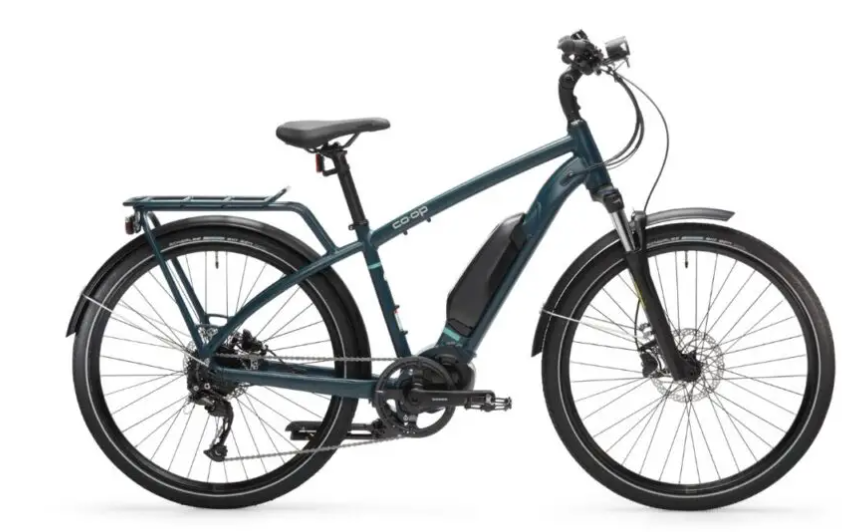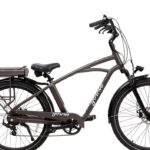How does an electric bike work? What is it? An electric bike has a motor that gets power from electricity and moves you along. Every day more and more people ride them. They’re fun to ride and have many benefits. They are more convenient and accessible than regular bikes.
Electric bikes are good for all types of people. But physically challenged people, residents of hill stations, and those who travel longer distances find e-bikes even more helpful.
However, electric bikes differ from each other in power, speed, and features. This variation is what defines their class. Different set of rules and regulations apply to different e-bike classes.
Electric bikes are divided into three classes for convenience. We are going to discuss each e-bike class. We will then give you some advice on how to pick the best type of e-bike for personal use. Now let’s get started!
Class 1 Electric Bike
Maximum speed for a Class 1 electric bike is 20 mph. E-bikes in this class can’t have motors that are stronger than 750W. These two features make them acceptable and legal almost everywhere.
These electric bikes are excellent for activities like commuting, exercise and off-road riding. They enable you to travel long distances with ease. They are also good for riding on hills and overcoming winds.
Class 1 e-bikes have many health benefits. This includes cardio workout and burning calories.
But there is one thing which makes Class 1 e-bikes even more important. That is their environmentally friendly nature. They’re better than cars and motorcycles. Why? Because they don’t use a lot of power.
You can find many Class 1 electric bikes on the market. Each has unique features and prices.
Now you have an idea of a Class 1 electric bike. It is an electric bike that goes forward when you ride it. But it is easy to ride because it has an electric motor.
This e-bike’s motor power (up to 750W) and speed limit (20 mph) are its two most important features.
You should check out at least ten class 1 e-bikes. Choose the one you like best before you buy it. This will help you pick the one that fits our needs and budget. Pay special attention to the e-bike specs like the battery capacity, motor power, drivetrain and brakes type.
Class 2 Electric Bike
One thing makes a Class 2 electric bike different from a Class 1 electric bike although its top speed is 20 mph and its motor power is 750W. It has a throttle besides the pedal assist system. The throttle is there for a purpose. It receives power from the motor and moves the bike without pedaling.
A Class 2 electric bike can also go as fast as 20 mph but not faster. The motor turns off once you reach this speed limit. A throttle and pedal assist system (PAS) are perfectly legal components of electric bikes in the vast majority of US states. We simply like to clarify that.
So, why should you get a Class 2 e-bike? Because you can ride it without pedaling. It is very convenient if you live in a hilly area.
So, why are Class II electric bikes so cool? Because you can ride them even if you have an injury or fatigue, or you have physical limitations. Majority of Class II e-bikes have a hub motor. These motors are not complicated and expensive like a mid-drive motor. The front or rear wheels have a hub motor.
Class 2 electric bikes also have some drawbacks. Some of them are:
- Class 2 e-bikes are not efficient and lightweight like Class 1 electric bikes. It is because of the entire throttle system on them.
- There are more regulations for Class 2 electric bikes.
- The safety of Class II e-bikes is inferior to that of Class 1 e-bikes. On any given ride, the throttle can suddenly stop working. This can suddenly increase your bike’s speed, and you can lose control.
You can find many models of Class 2 e-bikes on the market. Each has unique features and prices.
Now you know what a Class 2 electric bike is. It is an electric with a throttle and pedal assist system. Its speed limit is 20 mph and motor power limit is 750W.
This gives you many advantages, including convenience, comfort and flexibility. However, you need to choose and compare bikes and their features carefully. Pay special attention to the specs like battery capacity, motor motor, drivetrain, and brake type.
Class 3 Electric Bike
Class 3 e-bikes can go much faster than the first two groups. The pedal assist feature lets it go as fast as 28 mph.
Speed is the biggest difference between electric bikes in Classes 1, 2, and 3. Class 3 e-bikes are popular for both travel and riding for fun.
Class 3 electric bikes go by more than just “pedelecs.” Pedal electric cycles is another way to spell them. This is because, rather than using the throttle, a Class 3 e-bike receives motor assistance while you pedal.
Some Class 3 e-bikes have a throttle too. But it will assist you up to 20 mph. After that, the motor turns off. On a Class 3 e-bike, there is also a screen that tells you your speed and the level of pedal assist.
For Class 3 electric bikes, the most power the motor can produce is also 750W. This limit is there because of the legal restrictions for e-bikes in the US.
For your information, 750W is equal to 1 horsepower. It is enough to provide you a significant boost for pedaling a-bike. Class 3 e-bikes perform well on hills. They can cover longer distances and reduce your traveling time.
Now, let’s talk about limitations and regulations for Class 3 e-bikes. The answer is conditional on your current location, be it a country or a state.
In the US, multi-use paths are off-limits to Class 3 electric bikes. This includes paths and bike lanes. Electric bikes in Class 3 can only be used on bike lanes or roads that are made just for them.
Age limit applies to Class 3 e-bikes in the US. Kids younger than 14 can’t ride electric bikes. Class 3 e-bike riders can often go without helmets in some states. They should also have a license and registration for his e-bike.
Many types of Class 3 electric bikes are available. Class 3 e-bikes are entertaining and provide an exciting riding experience. They are fast and powerful e-bikes.
But, there is one thing you should not ignore. And that is the safety and legal implications of riding a faster and more powerful e-bike. We advise you to follow the e-bike regulations of your area.
Choosing an Electric Bike
Below are those factors that we want you to consider when choosing an electric bike:
Battery Capacity
It’s the battery that matters most on your e-bike. This one costs the most too. Based on how strong it is, the motor will help you ride your bike for how far and how long. Watt-hours (Wh) show how much power a battery has.
Range
The range of the battery varies because of different factors. They include pedal assistance level, rider weight, speed, terrain, and weather. In most cases, a battery with a higher capacity provides you a longer range. And a high capacity battery is also costly and bulky.
Motor power
The motor’s power is measured in watts (W), while its torque is measured in newton-meters (Nm). The motor power directly affects two things. The first one is your bike’s top speed. The second one is your bike’s ability to climb hills.
Torque
The torque is behind your bike’s acceleration and responsiveness. Many electric bikes have motors with power ranging from 250W to 750W. This is because of the legal reasons. But there is no limit for the torque. A motor with high torque improves your bike’s performance on mountains.
Drivetrain
The drivetrain is a system that sends the pedal power or the motor power to the wheels. It is of different types like chain, belt, or hub gear.
Brakes
These brakes make the e-bike go slower and stop. Different kinds of brakes exist, such as rim, mechanical disc, and hydraulic disc. Some companies let you pick the brakes and drivetrain. But, keep in mind that it can affect the bike’s cost.
The performance and durability of different types of brakes and drivetrain is also different.
Conclusion
Based on their electrical system, speed, and power, electric bikes are divided into groups. Currently, e-bikes are divided into three groups. Classes 1, 2, and 3 are some of them. Each class has different features and laws for them.
You can choose the best electric bike for you once you know about the different kinds. It makes sure you choose the right thing. What’s more, the rules and laws in your area may now accept all kinds of e-bikes.
E-bikes have many uses and make riding a bike fun and easy. You can find an electric bike that fits your needs or your plans.








